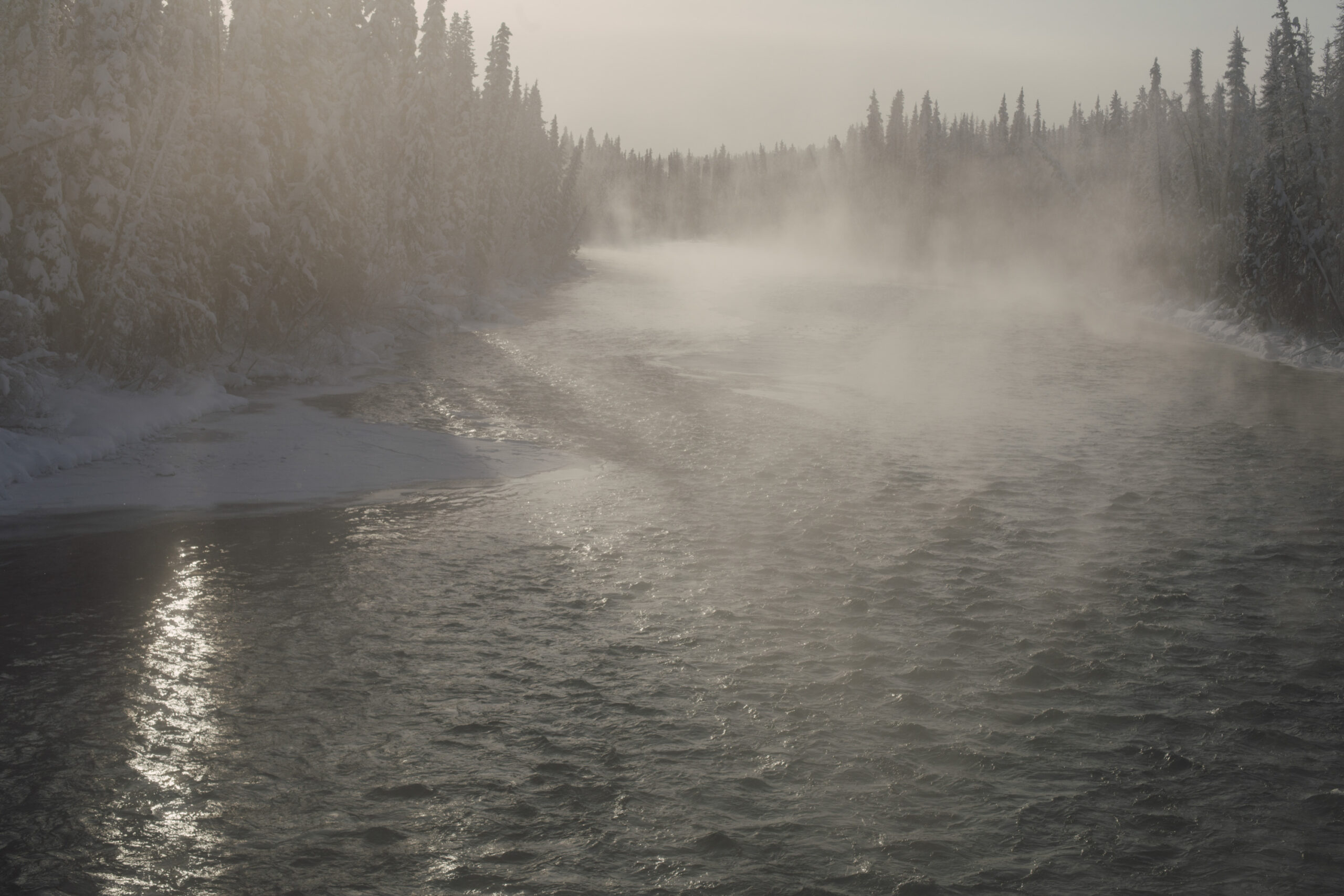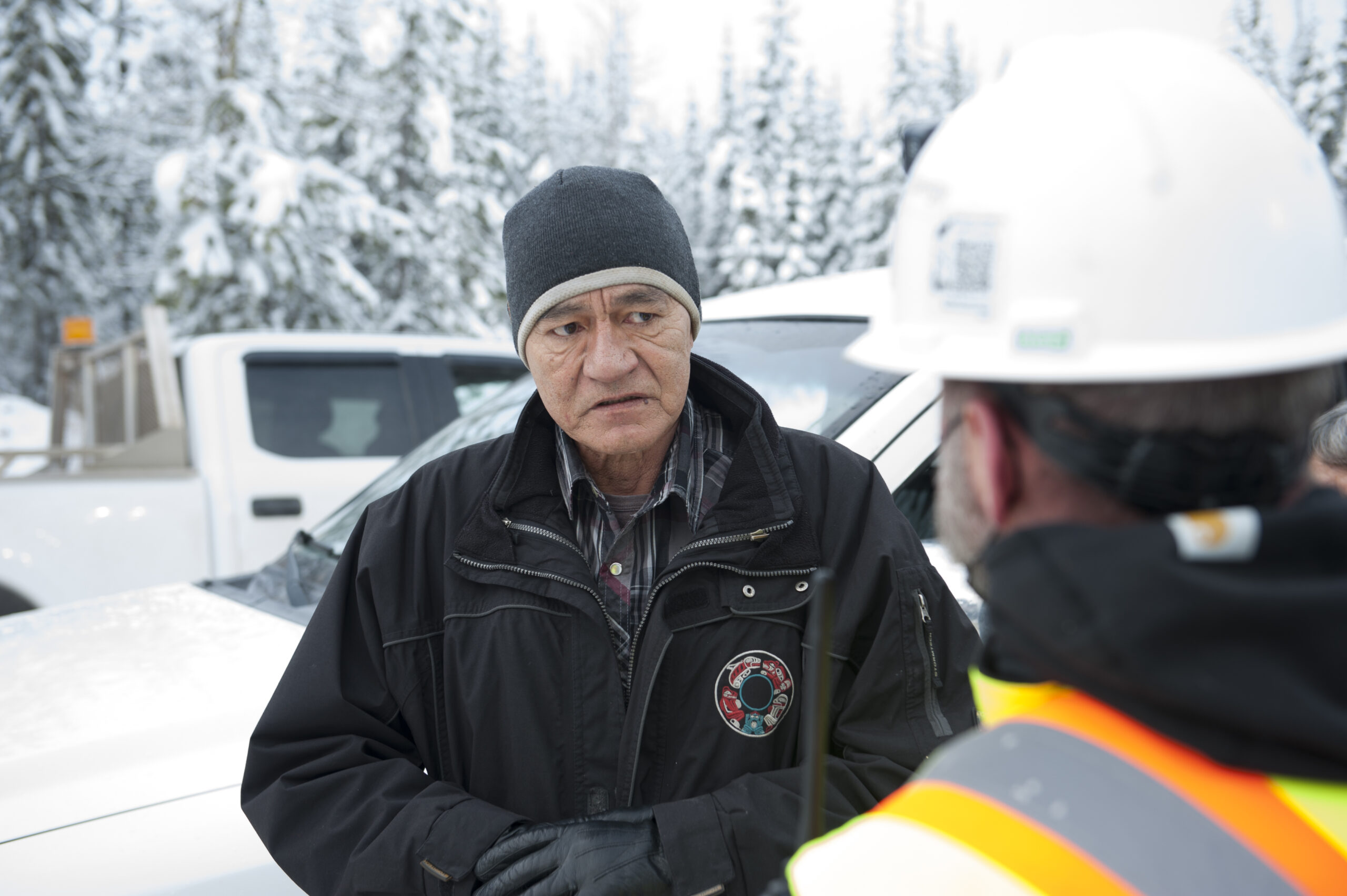
The Right Honourable Mary Simon aims to be an Arctic fox
Canada’s first-ever Indigenous governor general doesn’t play favourites among our majestic natural wonders, but she...
Coastal GasLink is facing a new fine for allegedly misleading enforcement officers and sending them false information about the company’s efforts to protect an area around the Anzac River during construction northeast of Prince George, B.C., according to a provincial inspection report.
On April 19, B.C.’s Environmental Assessment Office told decision-makers it recommends slapping the gas pipeline project with a new administrative penalty, after reviewing contradictory reports filed by the company.
The documents were part of regular reporting required under the terms of a compliance agreement signed in July 2022, after the company was repeatedly found to be committing environmental infractions.
Last October, the pipeline company submitted records that said it needed to make repairs in an active work area, mostly related to erosion and sediment control, a problem that has plagued the project since construction began in 2019. B.C. compliance and enforcement officers looked through the documents and found “multiple incidents where maintenance inspections were not completed as required in an area of construction that fell under the compliance agreement.” When the provincial officers sent their observations back to Coastal GasLink (CGL) in December for review, the company changed its story and submitted a new set of records.
On Jan.13, 2023, Coastal GasLink told the province the original field notes “were not being properly recorded in a standardized format and then maintained in an easily accessible digital format” and attached new documents. According to the provincial inspection report, the revised records claimed that all structures and mitigation measures in the work area during the time period in question “were in good working condition and that no corrective actions were required.”
But B.C. inspectors weren’t buying it. They had firsthand evidence the original reports were accurate, after inspecting the sites themselves.
“It appears that the inspection records provided by CGL … are false and misleading,” the provincial report noted.
The company later conceded that its reports “include contradictory statements” and attributed responsibility to its contractor, alleging workers “retroactively compiled their records using a combination of emails, field notes and timesheets,” which were not reviewed before being sent to the B.C. government. The contractor, SA Energy Group, a subsidiary of Aecon Construction, did not respond to The Narwhal’s requests prior to publication.

TC Energy, the Calgary-based energy giant building the pipeline, did not answer The Narwhal’s questions, referring instead to a statement published on its website.
“We made an error in the process of submitting a response to the [Environmental Assessment Office], where conflicting reports were provided,” the statement said. “While the correct information was already publicly available through past … inspection records, we regret this error. This has been clarified with the [Environmental Assessment Office] and we will continue to work with our prime contractor to do better.”
George Heyman, minister of Environment and Climate Change Strategy, said he supports the recommendation of issuing a financial penalty.
“This non-compliance is unacceptable, and I will be asking the [Environmental Assessment Office] about additional enforcement actions,” he told The Narwhal in a statement. “This enforcement action demonstrates the ongoing work and focus of the [Environmental Assessment Office] in overseeing the project.”
This isn’t the first time TC Energy has been in trouble with the province over its pipeline project. The company has been fined more than $450,000 for environmental infractions to date.
To Wet’suwet’en Hereditary Chief Na’moks, that’s not enough.
“They get a fine which is basically couch change,” he told The Narwhal in an interview. “The fines will be so minuscule, they will make absolutely no difference in the way they operate.”
In February, TC Energy announced Coastal GasLink costs had gone up again, to an estimated $14.5 billion. That’s more than double the original estimate and $3.3 billion over its 2022 projections. Costs could keep climbing. According to the company’s last quarterly report, if the project isn’t completed before the end of the year, its shareholders can expect to see an additional $1.2 billion tacked on to the final price tag.
Meanwhile, B.C. continues to ease the project’s financial burdens. As The Narwhal recently reported, the province’s energy regulator reduced its levies from $2,650 per kilometre to $1,700 per kilometre, saving the company $16 million. That’s on top of a suite of subsidies and incentives the government already promised. To ensure the pipeline project and its coastal counterpart, LNG Canada, are completed, B.C. doled out more than $6 billion in tax reprieves, tax exemptions, reduced electricity rates and financial commitments to secure support from First Nations communities.
On Wet’suwet’en territory, that support came in the form of agreements with five of six elected band councils but without the free, prior and informed consent of the Hereditary Chiefs, whose jurisdiction over the 22,000 square kilometre territory was affirmed in a landmark court case known as Delgamuukw-Gisday’wa.

Chief Na’moks has been on the front lines of opposition to the project for years. He said unless the province increases penalties substantially, environmental damage will continue.
“Government is caving in. They have the spine of a jellyfish and they’re not standing up for the people who actually voted them in. They’ve got to increase those fines to make it major; otherwise, it’s just the cost of doing business.”
Recently, Coastal GasLink reported two spills of clay lubricant from under the Wedzin Kwa (Morice River) on Wet’suwet’en territory. To get its pipeline across the river, the company is boring down into the earth and drilling a tunnel that will span more than 800 metres. The material leaked out from the tunnel during a process known as a frac-out, where the pressure from drilling causes stress fractures in the surrounding bedrock, releasing the muddy liquid up to the surface.
“One of the two clay deposits was identified in a small tributary on the west side of the Morice River,” a TC Energy statement said, noting the material is non-toxic.
The Narwhal asked the company about the possibility of a frac-out in November 2022. TC Energy did not directly answer.
“We take protecting watercourses very seriously, both because of their intrinsic environmental value and also because they support the diverse communities Coastal GasLink passes through,” a spokesperson wrote in an emailed statement. “We selected micro-tunneling as the safest and most effective crossing method with the input of subject matter experts, Indigenous communities and extensive environment and technical assessments.”
Na’moks cautioned every environmental infraction sets a precedent for projects waiting in the wings, like a pair of Enbridge pipelines — Pacific Trails and Westcoast Connector — and another owned by TC Energy, all of which have been approved by the B.C. government.
“The project in our territory is used as a template,” he said. “They’re pushing as hard as they can to see how little they can do in cost and in protection. And once the template is there, then it becomes normal, the standard, right? Well, it shouldn’t be normal, it shouldn’t be a standard.”
“People need to be aware, this is just the shot across the bow. It is going to get much, much worse.”
Get the inside scoop on The Narwhal’s environment and climate reporting by signing up for our free newsletter. A $335 million funding commitment to fund...
Continue reading
Canada’s first-ever Indigenous governor general doesn’t play favourites among our majestic natural wonders, but she...

In Alberta, a massive open-pit coal mine near Jasper National Park is hoping to expand...

A trade war could help remake B.C.’s food system, but will family farmers be left...
